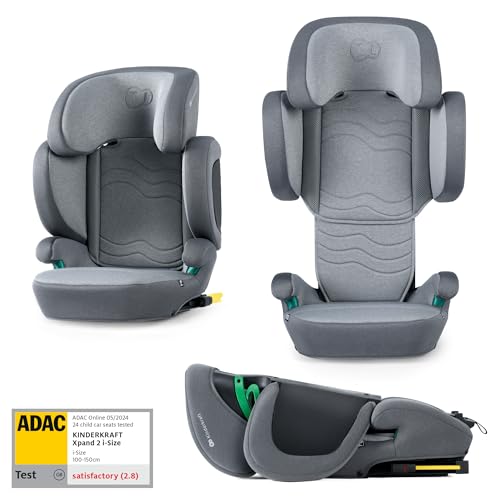One Pushchair And Pram Success Story You'll Never Be Able To
페이지 정보
작성자 Clair 작성일25-09-05 01:28 조회2회 댓글0건본문
Understanding Pushchairs and Prams: A Comprehensive Guide
When it pertains to baby movement, the terms "pushchair Twin" and "pram" are often used interchangeably. However, they represent distinct kinds of baby carriers, each crafted for particular phases of a kid's development and varied adult needs. This article looks into the important differences between pushchairs and prams, their functions, types, and considerations for brand-new parents.
What is a Pushchair?
A pushchair, commonly referred to as a stroller in some areas, is designed for kids who can stay up separately. Usually, pushchairs are modern, lightweight, and have a seat that can be reclined for included comfort. They might also feature a five-point harness to ensure the kid's security while on the go.
Secret Features of Pushchairs
- Lightweight Design: Most pushchairs are made from lighter products, making them simple to navigate and transfer.
- Adjustable Seats: Many models use recline alternatives, accommodating resting or active positions.
- Canopy: Most pushchairs come equipped with a sunshade or canopy to secure the kid from sun direct exposure.
- Storage Space: They usually consist of a lower storage basket, perfect for holding diaper bags or shopping.
Common Types of Pushchairs
- Requirement Pushchairs: Traditional options suitable for children who can sit individually.
- Umbrella Strollers: Lightweight, compact, and simple to fold; ideal for traveling.
- All-Terrain Strollers: Built with bigger wheels for off-road capabilities and smooth trips on varied surface areas.
- Travel Systems: Combines a stroller and an infant vehicle seat, enabling parents to move their kid effortlessly.
What is a Pram?
A pram, brief for "perambulator," is mainly designed for infants, usually from birth till roughly six months. Prams are structured with a flat lying position that supports a newborn's anatomy, guaranteeing they are cradled correctly.
Key Features of Prams
- Flat Bed Design: Prams have a completely flat bed, which is vital for young babies who require to lie flat for comfort and health.
- Stylish Aesthetics: Many prams boast vintage or traditional designs, typically seen with luxurious fabrics and appealing surfaces.
- Suspension System: Quality prams often consist of a suspension system to supply a smoother ride over rough terrain.
- Extended Canopy: Extended sun security and rain covers are common.
Typical Types of Prams
- Classic Prams: Featuring a conventional design, these are often styled to stimulate fond memories.
- Convertible Prams: These can quickly change from a pram to a pushchair and normally grow with the kid.
- Lightweight Prams: More compact than conventional prams, making them simpler to transport.
Distinctions Between Pushchairs and Prams
| Function | Pushchair | Pram |
|---|---|---|
| Use Case | For children who can stay up | For newborns and babies |
| Style | Upright seat with reclining option | Flat bed for resting |
| Weight | Usually lighter | Heavier due to tough building and construction |
| Compactness | Folds easily and compactly | Might be bulkier, depending upon design |
| Age Range | 6 months to 4 years or older | Birth to roughly 6 months |
| Rate Range | More budget friendly choices readily available | Typically more expensive due to materials and style |
Picking Between a Pushchair and Pram
When picking between a pushchair and a pram, numerous elements necessitate factor to consider:
- Age of the Child: Newborns need a pram uk; older babies and toddlers will be more comfy in a pushchair.
- Way of life Needs: Parents who travel frequently might choose lightweight pushchairs, while those looking for comfort in design may favor prams.
- Budget plan: Prams can vary from moderately to expensive; credible pushchairs can deal with budget-conscious buyers.
- Storage Space: Consider how easily the selected design can fit in your cars and truck trunk or home storage.
Frequently asked questions
Q1: Can I use a pushchair for a newborn baby?
While particular pushchairs are developed with reclining features that might accommodate infants, it is generally recommended to utilize a pram or specifically created infant safety seat for newborns.
Q2: Are travel systems worth the investment?
Travel systems can provide benefit by combining a vehicle seat and a stroller. They enable for seamless transition from automobile to stroller, which many parents find important.
Q3: How do I preserve my pushchair or pram?
Routinely clean the fabric, look for mechanical issues, and lube the wheels. Make sure to follow specific care instructions offered by the manufacturer.
Q4: What is the weight limit for pushchairs and prams?
Weight limits vary by design: generally, pushchairs accommodate approximately 50 lbs, while prams and strollers fit babies approximately 30 lbs. Constantly describe the maker's standards.
Q5: Is it important to have a rain cover for my pushchair or pram?
Yes, a rain cover can secure your kid from rain and wind, preserving comfort while avoiding damp clothes.
In summary, pushchairs and prams serve important but distinct functions in the mobility landscape for parents and caregivers. Picking the best model depends upon the kid's age, way of life requirements, and family choices. By understanding the characteristics, advantages, and distinctions between cheap pushchairs and prams, parents can make informed choices that make sure comfort and safety for their child. Whether walking through the park or navigating busy streets, the perfect movement option is out there waiting.

댓글목록
등록된 댓글이 없습니다.

